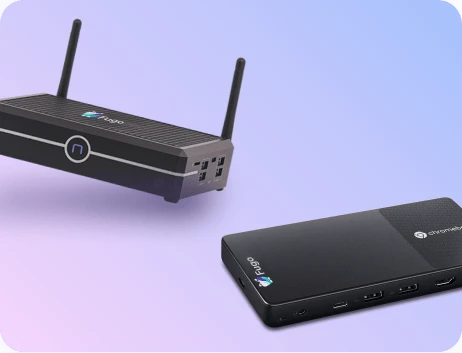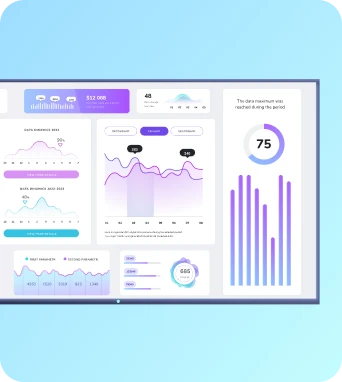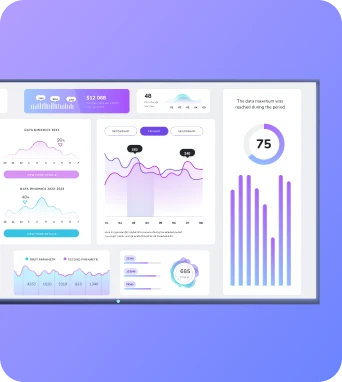Blue light reduction displays
Blue light reduction displays are screens tuned or filtered to reduce short-wavelength blue light emission while preserving legibility and colour integrity. Used in digital signage and TV dashboards they aim to lower visual fatigue for prolonged viewers, support safer shift patterns and align with workplace display comfort practices without compromising message clarity.
Blue light reduction displays
How blue light reduction works and display options
Blue light reduction is achieved through combinations of hardware and software methods. At the hardware level, manufacturers may use altered LED phosphors, different backlight spectra or laminated optical filters that absorb or scatter short-wavelength light. These approaches physically change the light output of the panel, so they tend to be persistent across all content and viewing conditions. Software approaches include colour-temperature adjustments, dynamic white-point shifts and per-pixel tone mapping that reduce blue channel intensity during evening hours or when prolonged viewing is detected. Some systems expose user-selectable modes — often labelled “low blue light” or “comfort view” — that apply a warmer colour temperature and slightly reduce peak luminance. Each approach has trade-offs for digital signage. Hardware filters can simplify network management by ensuring consistent behaviour without per-screen configuration, but they may reduce maximum brightness and subtly alter brand colours. Software modes preserve brightness and can be scheduled or linked to occupancy sensors, yet they require calibration to avoid noticeable colour shifts on graphics, logos and video. For TV dashboards used in control rooms or data-critical environments, maintaining accurate colour contrast and crisp text is paramount; here, careful calibration and validation against colour charts and real-world content are required. In public-facing signage, consider viewer distance and ambient light: at greater distances the visual impact of blue reduction is less pronounced, but in close-proximity reception areas or staff break rooms it becomes important to balance comfort with message fidelity.
Deployment, calibration and operational guidance
A practical deployment starts with policy: define when and where blue light reduction is required based on viewer exposure, operating hours and the criticality of colour accuracy. Use pilot screens to compare hardware and software methods under the actual lighting conditions of the site. Calibrate each display to measure white point, gamma and luminance both with reduction enabled and disabled. For colour-sensitive dashboards, maintain a reference profile and document acceptable deltas in colour measurements. Many operators adopt dual profiles: a daytime profile with full colour fidelity and higher brightness for readability in bright environments, and an evening or low-exposure profile that reduces blue light and brightness. Automating profile swaps by schedule, ambient light sensor or integration with building management systems reduces manual intervention across large networks. Regulatory and health guidance should inform your approach. In the UK, employers must follow Display Screen Equipment (DSE) regulations and Health and Safety Executive recommendations for workstation risk assessment; this includes considering display settings, break schedules and screen positioning. For multi-site signage networks, central monitoring of brightness and mode status helps identify screens operating outside policy. Use remote management tools to push calibration updates, verify active profiles and collect ambient-light telemetry where available. User testing is essential: gather feedback from staff or representative viewers about perceived comfort and readability, and iterate settings. Finally, document rollback procedures so you can restore original profiles if certain content requires precise colour reproduction for a campaign or safety-critical readouts.
Integration with content management and scheduling
Keep the learning going...
Biometric audience tracking
Biometric audience tracking is the automated measurement of viewer characteristics and engagement at public displays using biometric signals such as facial features, gaze direction, and dwell time. In digital signage it estimates anonymised demographics and attention metrics to inform content decisions and measure campaign reach without storing personal identifiers.
Biometric-triggered content
Biometric-triggered content uses biometric inputs such as facial analysis, voice, gait or gesture detection to adapt what displays on digital signage and TV dashboards in real time. It enables personalised messaging, contextual information or access prompts while imposing strict requirements for consent, data protection and secure integration into signage networks.
Bluetooth beacons
Bluetooth beacons are small battery-powered devices that broadcast Bluetooth Low Energy signals to nearby receivers. They transmit identifiers which mobile apps or signage systems use to estimate proximity and trigger contextual actions, such as displaying targeted messages on TV dashboards, wayfinding cues, asset tracking updates, or location-based analytics.



